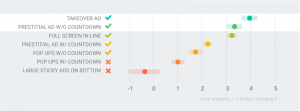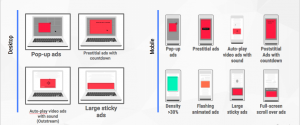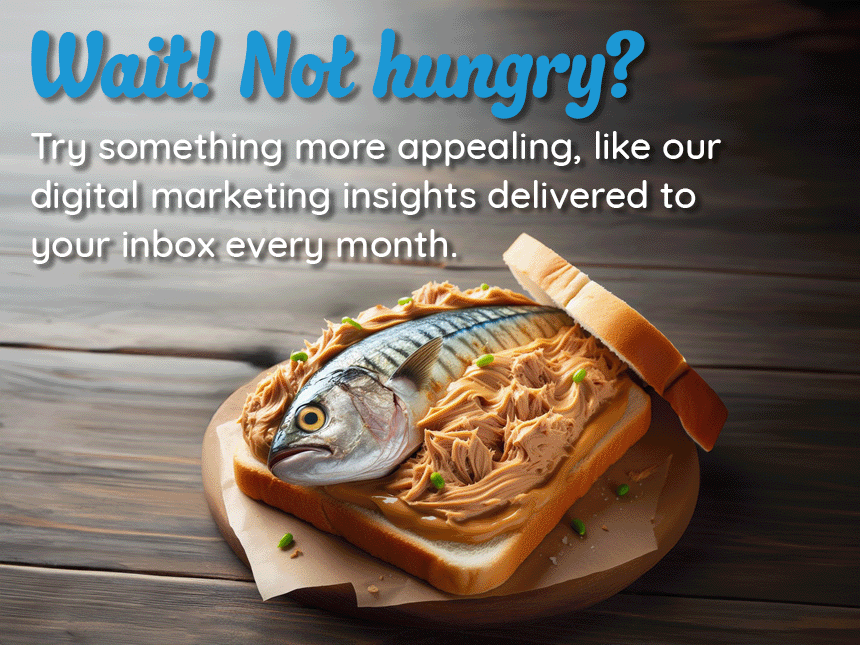Chrome Ad-Block Browser: Making the Internet Less Annoying
On February 15, Alphabet Inc., Google’s parent company, showed the world wide web a little love when it launched the new version of its Chrome browser. Built into the browser is ad blocking technology that will automatically block intrusive ads.
This is a big deal because Chrome is by far the leading internet browser in the world, representing 56 percent of the browser market share worldwide. Google also own’s 91 percent of the Search Engine market share worldwide. They clearly have the most to lose, and at first, glance appears to have made a colossal misstep. But don’t worry, Google/Chrome will be fine. They are playing the long game. Ad blocking software poses the biggest threat to the digital marketplace and this is a move to slow the trend. Let’s discuss.
According to PageFair’s 2017 Adblock Report, “The state of the blocked web” outlines just how big of a threat it really is. According to the report’s findings, the global number of desktop and mobile devices that block ads grew by 30 percent globally year-over-year. What’s troubling is that according to the study, “Adblock adoption on desktop and laptop computers continues to grow despite user migration towards the mobile web.” There is a problem. Many critics say that Ad-blocking is a threat to the internet as we know it because websites and publishers rely on advertising revenue to keep their doors open.
If we fail to do this as an industry, ad-blocking will rise and everyone will lose. – Stephan Loerke, CEO, World Federation of Advertisers (WFA)
What to do about it?
Facebook tried to block desktop ad blockers back in August. In response to the growing trend in ad blocking software, The Coalition for Better Advertising was formed. The group includes advertising companies, publishers, and tech companies on a mission to improve the online advertising experience for consumers and to promote adoption of the Better Ads Standards. They conducted user ad experience surveys on 25,000 users in North America and Europe. The data showed that people don’t hate all ads. They just hate the really annoying ones.


Four desktop and eight mobile ad types made the naughty list. The Better Ads Standards suggests removing the below ads to improve consumer’s ad experience. They hope the move will aid in rebuilding consumer’s trust.

What is Chrome’s new browser blocking?
The new Chrome uses the coalition’s Better Ads Standards in deciding which ads to block. It won’t block all ads but rather attempt to block the most annoying ads. The Better Ads Standards will be the watchdog. The coalition will take a sample of a publisher’s website and give it a passing, warning, or failing grade. The grade is based on the percentage of page views in the sample that contains violations. So, when a Chrome user visits a web page, the browser checks if the page belongs to a site that fails the Better Ads Standards. Web owners can check their Ad Experience Report in Web Console and are given 30-days to become compliant. Check out the video below.
As a data-driven digital marketing manager who loves a good ad, I applaud this move. The ads listed on the naughty list will not be missed. At Arc Intermedia, we have never used these ad types because they do not adhere to our ethical standards. The Adblock adoption rate is a threat to all of us in the digital advertising world. The new Chrome browser with ad blocking is Google’s attempt to slow the growth of users adopting more aggressive blockers by addressing the root cause. There is no need to fear this new version of Chrome and its adblocking technology. This change is good for us all, but if you fear your site may not be compliant, be proactive. If you are unsure where you stand, drop us a line. We’ll do you a solid and evaluate your website and advertising campaigns for free – no obligation.



